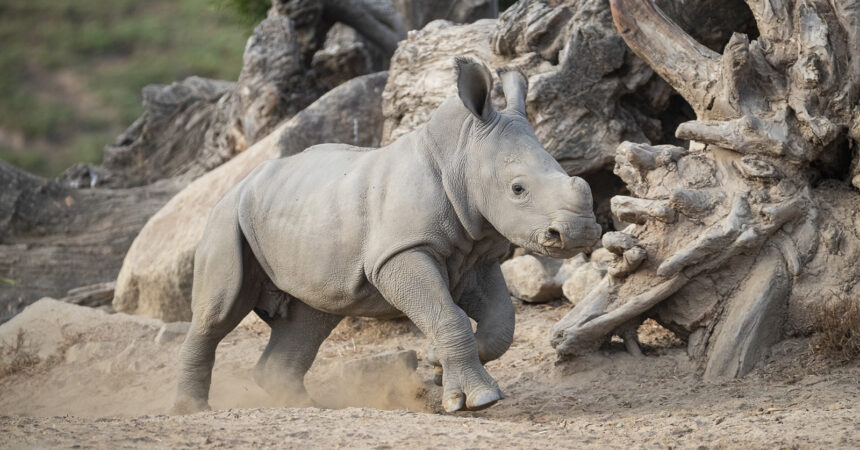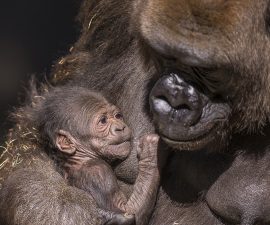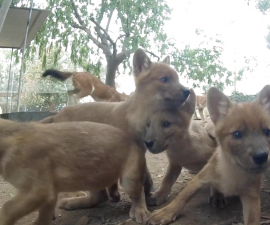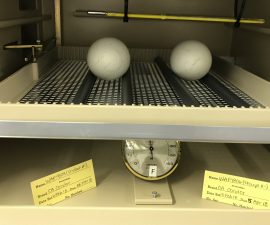Understanding and interpreting animal behavior is one of the many tasks a Wildlife Care Specialist must master in order to be successful in this field. Animals often communicate not just through sound, but also various nonverbal cues we humans can pick up on to interpret what that animal is “saying”. Early in the morning of July 22 2020, southern white rhino Kacy had a lot to “say”.
Southern white rhinos have a gestation period of 15 to 16 months. Thanks to the help from our reproductive team, we were able to confirm that Kacy was indeed pregnant a few months after we witnessed her breeding with our bull J. Gregory, and we marked the calendar. The animal care team had noticed many physical changes in Kacy as her due date approached; her stomach was tight and round, her gait was more of a waddle than a walk, and other thing. These physical changes were important to notice and keep track of but it was her behavior change that alerted the staff to early signs of labor.
Kacy is usually a very calm, cool, collected rhino. She was tightly bonded with her previous calf, 2-year-old Justin—they were never seen more than a few feet away from one another. That morning at 6 a.m., the animal care staff noted that Kacy seemed uncomfortable and agitated; even Justin was keeping his distance. Her behavior and physical appearance changed so much overnight we knew this was the moment we had been patiently waiting for, labor was around the corner and we’d have a new member added to the crash (the term for a group of rhinos)!
During a rhino birth at the Safari Park, there is usually one to two wildlife care specialists observing. The purpose of watching the birth is extremely important. We record the progression of labor, presentation of birth and watch the newborn calf to make sure nothing goes astray (the information gathered also helps as a teaching tool for newer staff). The Northern White Rhino project also takes this data and uses it for a baseline of future dams and calves.
This birth watch took place for approximately 24 hours. Kacy progressed every hour, we were able to see milk leaking from her udder, discharge from her rear, and a constant shifting of weight as she tried to get comfortable. Other members from the crash wanted to check in on her, and Justin seemed confused as to why his mother didn’t want him close to her. Yet, anytime a rhino would approach, Kacy used body language and soft sounds to let them know this wasn’t the time to hang: turning her head a certain way or huffing at them was used frequently.
It wasn’t until about 5:30 a.m. the next morning that we noticed Kacy having big contractions and eventually were able to see two front feet starting to emerge. Then, everything happened quickly. Just two minutes after we first saw the feet emerge the tiny female calf, Alice, was born!
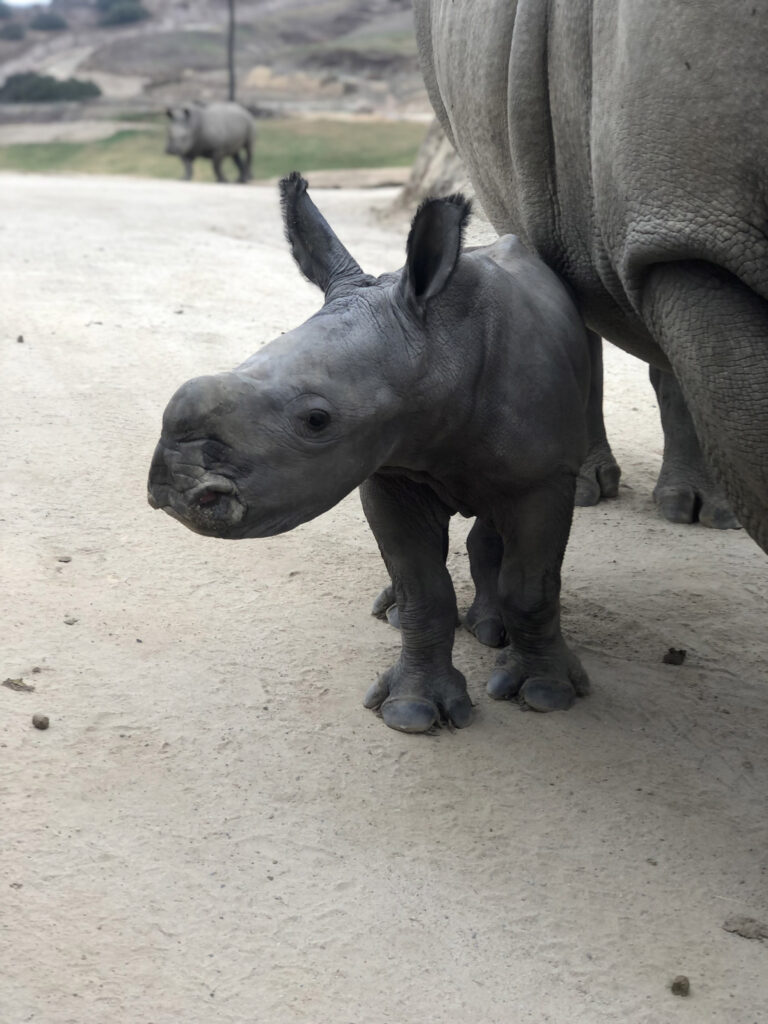
Kacy stood up shortly after the delivery and began grooming Alice. An experienced mom, Kacy let Alice her figure out how to stand, nurse, and walk all in her own time. Both Kacy and Alice made subtle but determined movements to communicate and bond with each other, and witnessing that from day one to today is an amazing sight to see. Be sure to keep an eye out for one of our newest members of the crash when you visit the Safari Park!
Asha Natividad is an animal care specialist at the San Diego Zoo Safari Park. Read her previous blog, Two Cool Rhinos.

